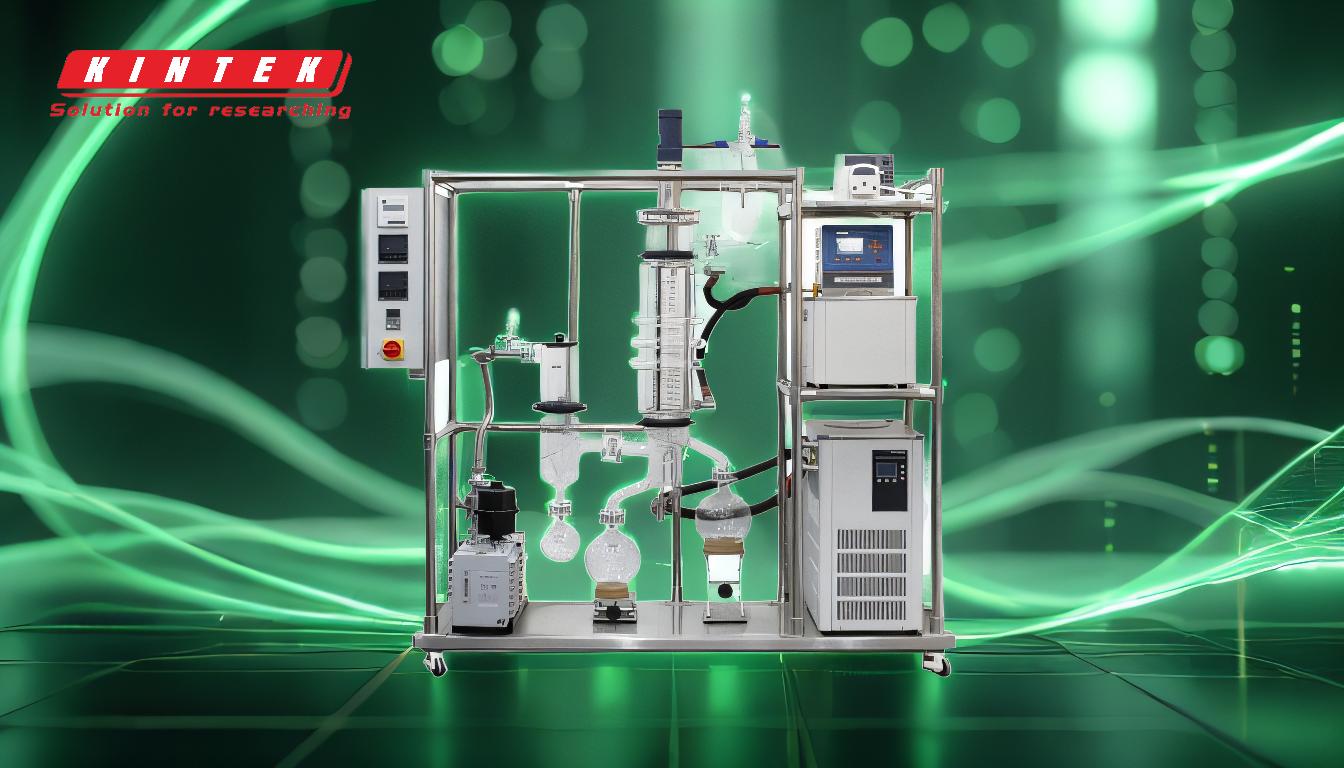Distillation is indeed a highly effective method for purifying substances, particularly liquids. It leverages the differences in boiling points of the components within a mixture to separate and collect them in a purified form. The process involves heating the mixture to vaporize the more volatile components, which are then condensed back into a liquid and collected. This technique is widely used in industries such as chemistry, pharmaceuticals, and food production. While distillation is most commonly applied to liquids, it can also be adapted for gas mixtures by manipulating pressure and temperature to liquefy and separate components.
Key Points Explained:

-
Principle of Distillation:
- Distillation relies on the principle that different substances in a mixture have different boiling points. When the mixture is heated, the component with the lower boiling point vaporizes first, while the others remain in liquid form.
- The vapor is then cooled and condensed back into a liquid, which is collected separately from the original mixture. This process effectively isolates the more volatile component from the rest of the mixture.
-
Steps in the Distillation Process:
- Heating: The mixture is heated to a temperature at which the desired component begins to vaporize. This temperature is carefully controlled to ensure that only the target substance is vaporized.
- Vaporization: The component with the lower boiling point turns into vapor and rises, leaving behind the other components in the liquid state.
- Condensation: The vapor is then passed through a cooling system (condenser) where it is cooled and converted back into a liquid.
- Collection: The condensed liquid, now purified, is collected in a separate container.
-
Types of Distillation:
- Simple Distillation: Used for mixtures where the boiling points of the components are significantly different (e.g., water and salt). This method is straightforward but may not be effective for mixtures with similar boiling points.
- Fractional Distillation: Employed when the boiling points of the components are close to each other. It uses a fractionating column to provide multiple vaporization-condensation cycles, enhancing the separation efficiency.
- Vacuum Distillation: Used for substances that decompose at high temperatures. The process is carried out under reduced pressure, which lowers the boiling points of the components.
- Steam Distillation: Utilized for separating heat-sensitive compounds, such as essential oils from plant materials. Steam is passed through the mixture, carrying the volatile components with it.
-
Applications of Distillation:
- Chemical Industry: Distillation is used to purify chemicals and solvents, ensuring that the final products meet the required purity standards.
- Pharmaceuticals: It is crucial in the production of pure drugs and active pharmaceutical ingredients (APIs).
- Food and Beverage Industry: Distillation is used in the production of alcoholic beverages, such as whiskey and vodka, where it helps to concentrate the alcohol and remove impurities.
- Petroleum Refining: Fractional distillation is a key process in refining crude oil into various products like gasoline, diesel, and jet fuel.
-
Advantages of Distillation:
- High Purity: Distillation can achieve very high levels of purity, making it suitable for applications where purity is critical.
- Scalability: The process can be scaled up or down depending on the volume of the mixture to be purified.
- Versatility: It can be adapted to a wide range of mixtures and substances, including both liquids and gases.
-
Limitations of Distillation:
- Energy Intensive: The process requires significant energy input, especially for large-scale operations.
- Not Suitable for All Mixtures: Distillation may not be effective for mixtures with components that have very similar boiling points or for substances that decompose at high temperatures.
- Cost: The equipment and energy costs can be high, particularly for complex distillation setups like fractional or vacuum distillation.
-
Considerations for Equipment and Consumables Purchasers:
- Material Compatibility: Ensure that the distillation equipment is made from materials that are compatible with the substances being processed, especially if they are corrosive or reactive.
- Energy Efficiency: Consider energy-efficient designs and technologies to reduce operational costs.
- Scalability: Choose equipment that can be easily scaled to meet future production needs.
- Maintenance and Durability: Opt for equipment that is easy to maintain and has a long operational life to minimize downtime and replacement costs.
In summary, distillation is a powerful and versatile method for purifying substances, particularly liquids, by exploiting differences in boiling points. While it has some limitations, its ability to achieve high purity and its wide range of applications make it an indispensable technique in many industries. For those purchasing equipment and consumables, careful consideration of material compatibility, energy efficiency, and scalability will ensure optimal performance and cost-effectiveness.
Summary Table:
| Aspect | Details |
|---|---|
| Principle | Separates components based on boiling points. |
| Steps | Heating → Vaporization → Condensation → Collection. |
| Types | Simple, Fractional, Vacuum, Steam Distillation. |
| Applications | Chemical, Pharmaceutical, Food & Beverage, Petroleum Refining. |
| Advantages | High purity, scalability, versatility. |
| Limitations | Energy-intensive, not suitable for all mixtures, high costs. |
| Purchasing Tips | Material compatibility, energy efficiency, scalability, maintenance. |
Discover how distillation can optimize your processes—contact our experts today!










